Search the Special Collections and Archives Portal
Search Results
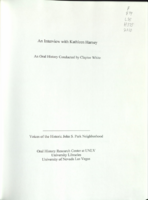
Transcript of interview with Kathleen Harney by Claytee D. White, July, 19, 2010
Date
Archival Collection
Description
Text
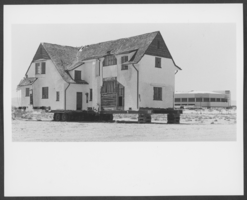
Photograph of J. Kell Houssells home, Las Vegas, 1983
Date
Archival Collection
Description
Image
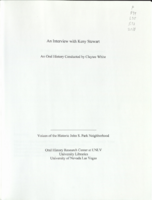
Transcript of interview with Keny Stewart by Claytee White, January 16, 2010
Date
Archival Collection
Description
Keny Stewart often sits in his backyard and hears the train whistle. In that moment he thinks about what Las Vegas must have been like in the 1940s—a moment made more meaningful by living in historic John S. Park Neighborhood. He enjoys his place, a place he has called home for 20 years. He was there for the beginning of the neighborhood "renaissance". Keny moved from California to Las Vegas in 1984 to work as an entertainer. One day a few years later he accidentally drove through John S. Park neighborhood, admired the architecture of the homes and the nostalgic feeling. Soon he was a homeowner, restoring his investment, a labor of love. At the time he worked nights on the Strip and restored his house day. Along the way he made a career change to educator/librarian for grade school level. He is a former neighborhood association president. He remembers the neighborhood's battle to maintain its integrity as it went up against local casino developer Bob Stupak's (whose home i
Text
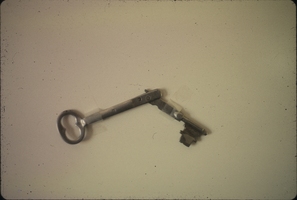
Slide of Key to Panaca Co-op, 1970
Date
Archival Collection
Description
Image
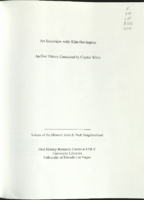
Transcript of interview with Kim Bavington by Claytee White, July 15, 2010
Date
Archival Collection
Description
Text
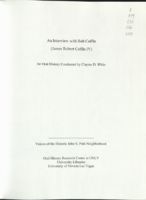
Transcript of interview with Bob Coffin by Claytee D. White, January 29, 2010
Date
Archival Collection
Description
Text
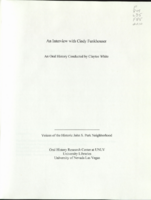
Transcript of interview with Cindy Funkhouser by Claytee D. White, January 14, 2010
Date
Archival Collection
Description
Text
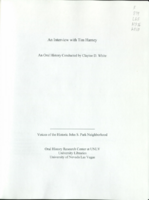
Transcript of interview with Timothy Harney by Claytee D. White, June 12, 2010
Date
Archival Collection
Description
Text
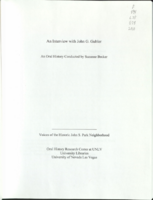
Transcript of interview with John G. Gubler by Suzanne Becker, December 29, 2008
Date
Archival Collection
Description
Text
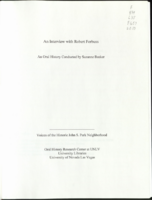
Transcript of interview with Robert Forbuss by Suzanne Becker, February 12, 2009
Date
Archival Collection
Description
In 1944, Robert Forbuss' mother bought a home in a new tract development called Huntridge, adjacent to the John S. Park Neighborhood. She was a single woman who had managed to put together the down payment from her earnings as a cocktail waitress. A couple years later John S. Park Elementary School was built nearby. Through any ups and downs, Marjorie Forbuss refused to live anywhere else for the rest of life, even when Robert encouraged her to move. For this interview, Robert intersperse Las Vegas history while sharing childhood memories of the neighborhood. He graduated from Bishop Gorman High School, the private Catholic prep school, in the mid-1960s. A few years later, Robert returned there as a teacher from 1973 - 1981, teaching kids with familiar last names in the neighborhood he had grown up in. During that time he lived in the John S. Park Neighborhood. He details the charm of the neighborhood, cruising the Downtown area, shopping on Fremont Street and much more. When Robert left teaching, he became the general manger of Mercy Ambulance and Medical Supply, which he ultimately owned until about 2003. During this time, he was a successful business leader and an active community member.
Text
